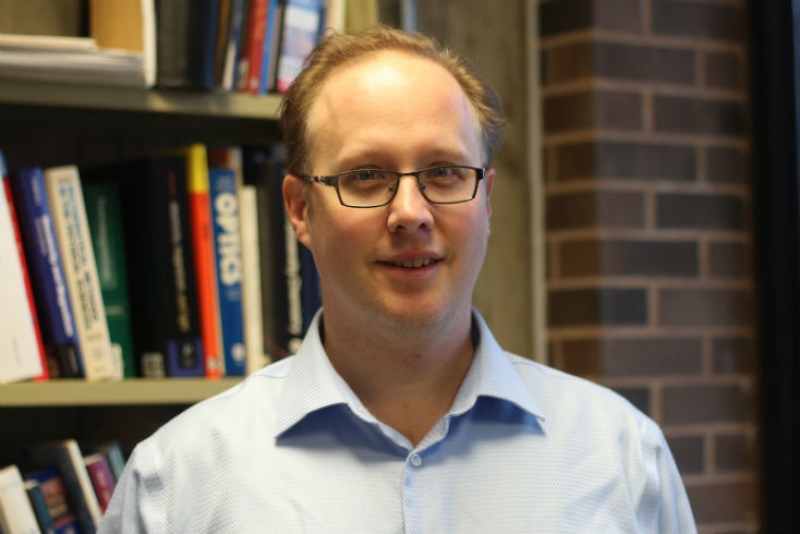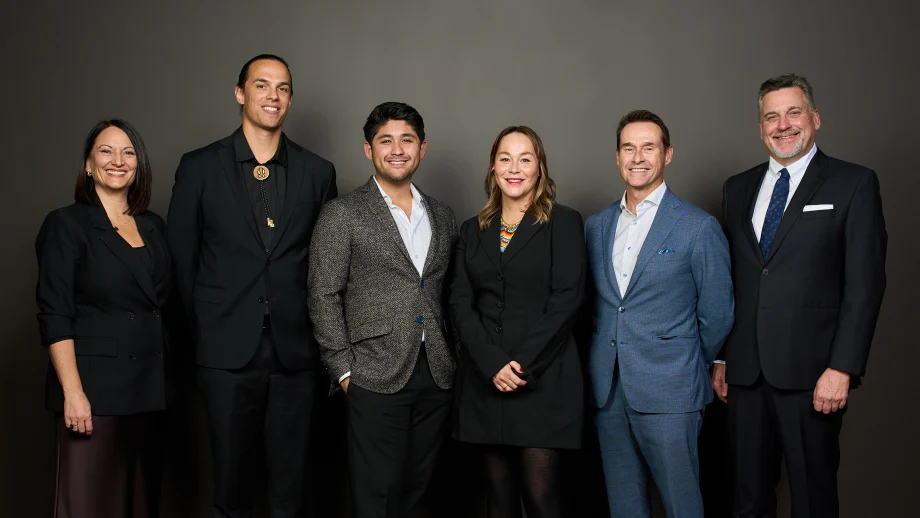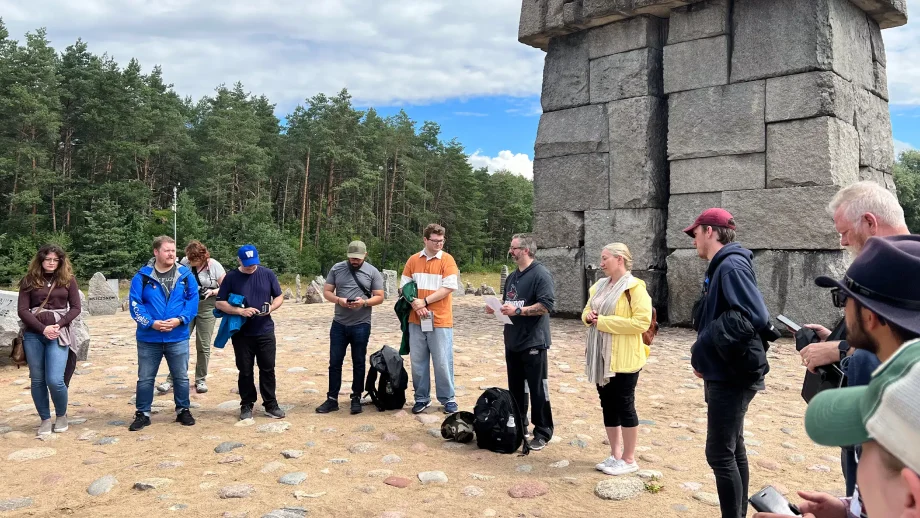Dr. Blair Jamieson inside the Japanese Super-Kamiokande detector
Observing supernova relic neutrinos from the ‘big bang’ seems like an experiment from a galaxy, far, far, away. However, the Japanese Super-Kamiokande, the world’s largest water Cherenkov detector, can make these observations — but it needs refurbishing.
UWinnipeg physicist Dr. Blair Jamieson is currently in Japan as part of an exciting international consortium to help refurbish the Super-Kamiokande to help make observing relic neutrinos possible. Jamieson is undertaking this work as part of his proposal for joining the Super-Kamiokande collaboration.
“I am working with an international team (Japan, UK, USA, Spain, France) on this 40 meter diameter, 40 meter high detector, that was opened for the first time in 12 years this May,” said Jamieson. “This was a good opportunity to see the inside of this large detector.”
Every three days the team lowers the water in the detector another two meters, so that they can work on removing rust, sealing the walls of the detector to reduce leaks, and putting up new white-sheets of Tyvek to optically separate the inner and outer detectors.
The refurbishment work is very arduous and has turned into a real adventure that includes typhoon heavy rains and damaged roads, causing delays in the work.
“This demanding work is worth the painstaking effort,” said Jamieson. “The possibility of detecting neutrinos left from the big bang could be possible with the next phase of the refurbished Super-Kamiokande. This makes this work exciting for the endless possibilities of discovery once it is completed.”
Jamieson will be using the Super-Kamiokande for his neutrino research program along with a few of his students. They will be working on neutrino physics measurements using data from the refurbished Super-Kamiokande detector.






